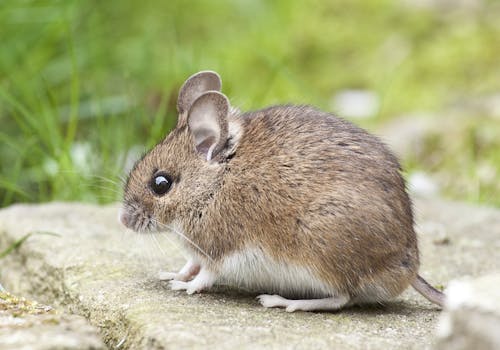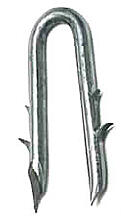Small Rodent, Big Appetite
Midnight Marauder
Kangaroo rats are small rodents with a big appetite for seeds and vegetation and can destroy a garden of any style. They are nocturnal and raid gardens and hoard foods during the night. Traditional apron fences and chicken wire are ineffective at keeping them out because this rat can squeeze through small openings.
Expandable Cheeks that are Fur-Lined
Before we consider how to stop them, let's take a moment to learn a little more about this interesting creature. It inhabits the Southwestern U.S. primarily and gets its name from its long hind legs and the way it sits on them, hopping up to six feet in a single bound. But that's where the similarity to a kangaroo ends. The exceptional characteristic that they possess is the ability to survive in the desert. They have admirable kidney function which allows them to survive for long periods without water. They have large fur-lined expandable cheeks that they pack with food and then bring it back to a storage location for later consumption when there is none available. This is how they can devastate a garden so quickly because they don't take time to eat, they grab as much as they can and then come back for more. They like seeds the most, so they do the most damage during planting season. They dig up seeds and clip off sprouts at their base.
Burrowing Under, Squeezing Through
So, if traditional fencing does not work, what will? Hardware cloth is a lightweight galvanized mesh; it is available with ¼" square openings, too small for even the kangaroo rat to squeeze through. Since the rats can burrow, below-ground protection is also required.
The perimeter of the garden should be enclosed with the hardware cloth. It should extend at least 30" above grade and 12" below. Additionally, at the bottom, the material should be bent out forming a 6", 90° "L" similar to apron fence. Therefore a small trench of 7-8" wide x 12" deep should be dug around the garden, the L shaped hardware cloth is dropped in and back-filled. The portion extending above ground should be secured to posts. However, if there is an existing fence there is no reason to remove it, simply attach the hardware cloth to it. This plan of action should prevent the kangaroo rat from squeezing through or burrowing under into your garden. This method is both humane and effective, working best for smaller home gardens. Larger fields may require a different solution.
This plan of action should prevent the kangaroo rat from squeezing through or burrowing under into your garden. This method is both humane and effective, working best for smaller home gardens. Larger fields may require a different solution.
23 gauge, 4 x 4 (¼") Hardware Cloth--48" x 100' Roll
23 gauge, 4 x 4 (¼") Hardware Cloth--48" x 50' Roll
Acknowledgments to:
Dept. of Fisheries & Wildlife Sciences, New Mexico State University















